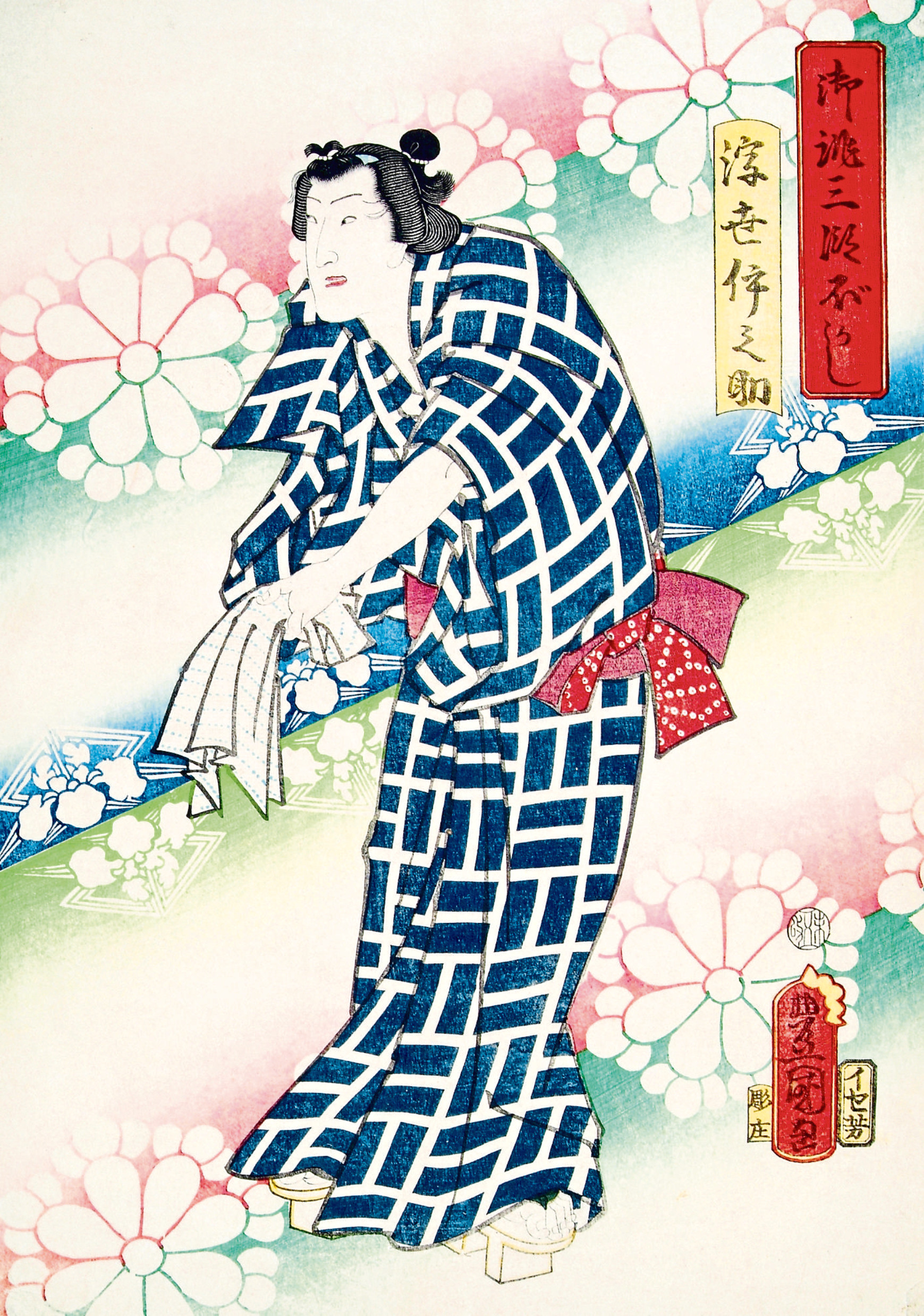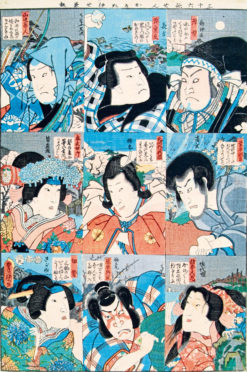A couple of weeks ago I visited Aberdeen University’s exhibition, Substance to Style: Traditional Arts of East Asia, which continues at the Sir Duncan Rice Library until August 22.
It’s a broad look at materials used in arts crafted across East Asia, but as soon as I stepped into the exhibition space I was immediately drawn to the Japanese woodblock prints known as Ukiyo-e.
I studied Japanese art at university and (luckily for me) was asked to talk about a woodblock print when I first came for an interview with Aberdeen Art Gallery & Museums.
The work I was shown was by the artist Utagawa Kunisada (1786-1864), so I had a sense the prints on loan to the university from National Museums Scotland were by the same artist.

Utagawa Kunisada was one of the most celebrated printmakers of the Edo period, producing as many as 20,000 designs during his career, some of which were issued in thousands of impressions.
Kunisada was a member of the Utagawa School, the most prolific of the Ukiyo-e tradition. He was renowned for his portraits of beautiful women and Kabuki actors of the urban pleasure districts, as demonstrated in his series of 36 contemporary actors (see right) a parody of the ‘thirty-six immortal poets’ whose work had been included in a famous 11th Century anthology of poetry.
Actor In a Blue And White Patterned Robe (below left) also by Kunisada (indicated by his signature in the red cartouche in the bottom right hand corner) typifies what I find so pleasing about these prints.
Striking colour and bold patterning are woven into compositions that favour design over realism. Flat planes of pure colour are clearly delineated and perspective in the western sense is refreshingly absent.
The subtle gradation of colour in the background could only be achieved by hand painting the wooden blocks before printing took place.
In fact, producing Japanese woodblocks was a collaborative process: artists such as Kunisada came up with the design but then relied on engravers, printers and publishers to create and disseminate the prints. Eleven of Utagawa Kunisada’s prints are stored at Aberdeen Treasure Hub where you can see them by appointment. To request a visit go to www.aagm.co.uk
Aberdeen Treasure Hub Museum will be open for Doors Open Day on Saturday September 7. See our website at www.aagm.co.uk for details of how to book a free behind-the-scenes tour.
Substance to Style: Traditional Arts of East Asia continues at the Sir Duncan Rice Library until August 22 www.abdn.ac.uk/events/14477/
Aberdeen Art Gallery & Museums:
-
- Aberdeen Art Gallery (reopening autumn 2019)
- Aberdeen Maritime Museum (open 7 days, admission free)
- The Tolbooth Museum (open 7 days, admission free)
- Aberdeen Treasure Hub Museum Centre
For visiting information go to www.aagm.co.uk
Keep up to date with all the latest news from Aberdeen Art Gallery & Museums by signing up to our e-newsletter at www.aagm.co.uk/mailinglist
Follow us on Facebook, Twitter and Instagram @AbdnArtMuseums
